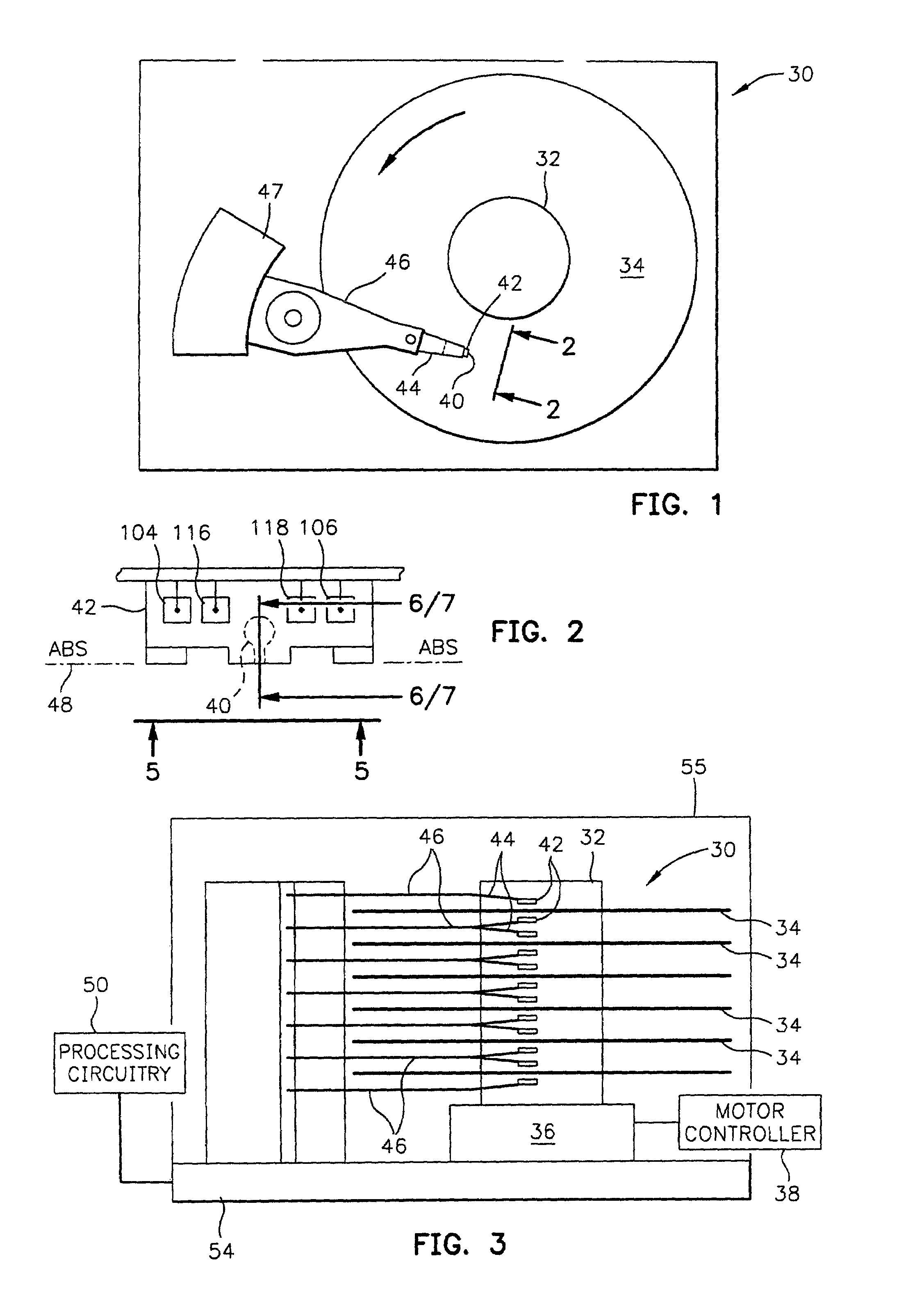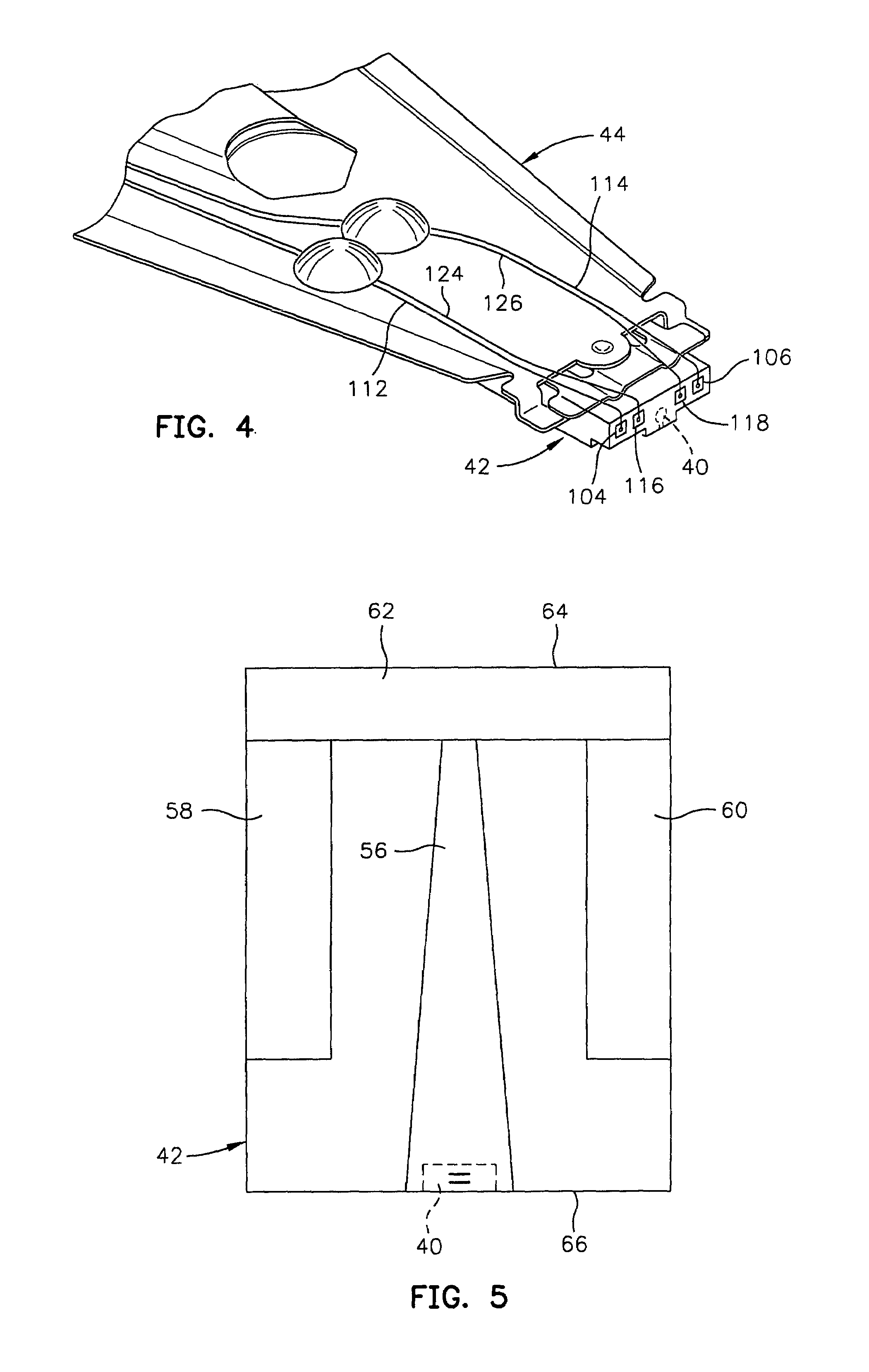Method of making a dual GMR read head with self-pinned layer and specular reflector
a self-pinned layer and read head technology, applied in the field of dual-spin valve sensor with self-pinned layer and specular reflector, can solve the problems of thin self-pinned layer not providing an adequate boundary. , to achieve the effect of reducing the magnetoresistive coefficient (dr/r), reducing the number of conduction electrons in the mean free path
- Summary
- Abstract
- Description
- Claims
- Application Information
AI Technical Summary
Benefits of technology
Problems solved by technology
Method used
Image
Examples
first embodiment
[0039]the present dual spin valve sensor 200 is illustrated in FIGS. 12 and 13. The sensor 200 includes a ferromagnetic free layer structure 202 which is located between nonmagnetic conductive first and second spacer layers (S) 204 and 206. The designation of first and second layers throughout the description has no significance regarding their respective locations which means that the spacer layer 206 could be the first spacer layer and the spacer layer 204 could be the second spacer layer. The first and second spacer layers 204 and 206 are located between a pinned layer structure (P), which is preferably a single pinned layer 208, and a self-pinned layer (SP) 210 respectively. The pinned layer 208 is exchange coupled to an antiferromagnetic (AFM) pinning layer 212 which pins a magnetic moment 214 of the pinned layer perpendicular to the ABS in a direction toward the ABS or away from the ABS, as shown in FIG. 12. A cap layer 216 may be on the pinning layer 212 for protecting it fro...
second embodiment
[0048]the present dual spin valve sensor 300 is illustrated in FIGS. 14 and 15. The dual spin valve sensor 300 is the same as the spin valve sensor 200 illustrated in FIGS. 12 and 13 except an antiparallel (AP) pinned layer structure 302 has been substituted for the pinned layer 208, the second specular reflector layer 228 may optionally be gold (Au), the seed layer 232 may optionally be nickel manganese oxide (NiMnO) or zirconium (Zr), and the first specular reflector layer 226 may be composed of an alloy of copper (Cu) and X where X is a high resistance material such as nickel (Ni), zirconium (Zr) or chromium (Cr) for reducing shunting of the sense current through the first specular reflector structure 222. The AP pinned layer structure 302 includes an antiparallel coupling layer 304 which is located between first and second ferromagnetic antiparallel layers (AP1) and (AP2) 306 and 308. The first antiparallel layer 306 is exchange coupled to the antiferromagnetic pinning layer 212...
third embodiment
[0051]the present spin valve sensor 400 is shown in FIGS. 16 and 17. This spin valve sensor is the same as the spin valve sensor 200 shown in FIG. 12 except all of the layers of the spin valve sensor have been reversed or turned upside down except for the seed layer 232 and the cap layer 216. This type of spin valve sensor is referred to in the art as a bottom spin valve sensor since the antiferromagnetic pinning layer 212 is now located at the bottom instead of at the top. It should be noted that the sense current IS now causes the magnetic moment 218 of the self-pinned layer to be toward the ABS instead of away from the ABS. Accordingly, the magnetic moment 214 of the pinned layer 208 should be pinned perpendicular to and toward the ABS by the antiferromagnetic pinning layer 212 so that the magnetic moments 214 and 218 are parallel with respect to one another. With the magnetic moment 236 of the free layer structure parallel to the ABS, as shown in FIGS. 16 and 17, a rotation upwa...
PUM
| Property | Measurement | Unit |
|---|---|---|
| thickness | aaaaa | aaaaa |
| nonmagnetic | aaaaa | aaaaa |
| nonmagnetic conductive | aaaaa | aaaaa |
Abstract
Description
Claims
Application Information
 Login to View More
Login to View More - R&D
- Intellectual Property
- Life Sciences
- Materials
- Tech Scout
- Unparalleled Data Quality
- Higher Quality Content
- 60% Fewer Hallucinations
Browse by: Latest US Patents, China's latest patents, Technical Efficacy Thesaurus, Application Domain, Technology Topic, Popular Technical Reports.
© 2025 PatSnap. All rights reserved.Legal|Privacy policy|Modern Slavery Act Transparency Statement|Sitemap|About US| Contact US: help@patsnap.com



